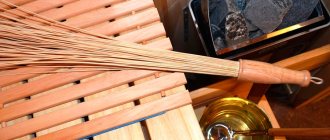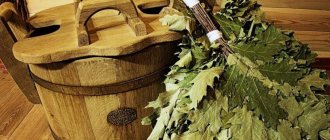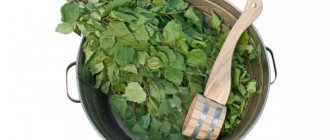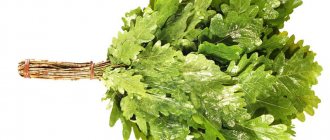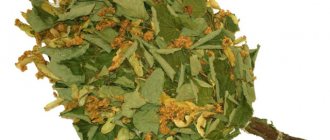The nettle bath broom has long had a good reputation. In the old days, it was believed that nettle was a remedy for all diseases. Taking a steam bath with such a broom could relieve aching muscles after a hard day, restore strength and cleanse the body.
Today they are rarely used. As a rule, experienced bathhouse attendants are divided into two camps: those who use nettle without fail, and those who under no circumstances recommend that they take a steam bath.
However, the nettle broom still has a right to exist. The main thing is to follow all the rules when using it.
The benefits of nettle broom
In terms of composition, nettle is a unique plant.
It contains:
More vitamin C than lemon and currants.
More carotene than in carrots and sea buckthorn.
An impressive amount of iron, magnesium, sodium, potassium, iodine.
The daily dose of vitamin A is in just 20 sheets.
Thus, when applied externally, nettle gives the skin a huge amount of vitamins.
In addition, nettle:
Starts regeneration processes.
Disinfects.
Tones.
Has an anti-inflammatory effect.
Prevents and relieves attacks of gout and rheumatism.
What kind of nettle is needed
The first thing to remember is that not every nettle is suitable for a broom.
Most often you can find stinging and dioecious nettles in the vastness of the regions.
Stinging is an annual plant.
It has thin stems and small leaves with fine teeth. Of course, the medicinal properties of such nettles are good. But even with one light touch to it, blisters and irritation will appear on the body.
Stinging nettle is a perennial herb.
Can stretch up to 2 meters in height. Its stem is quite strong and consists of four sides. The leaves are large and covered with small, stinging hairs. Each of them contains a capsule with formic acid, which provides this effect. However, she does not burn as much as her sister. Accordingly, this is the only type of nettle that can be used as a bath broom.
Expert opinion
Lovkachev Boris Petrovich
Bath master who knows everything about steaming
Stinging nettle can also often be confused with stinging nettle. But unlike the first one, this plant does not have burning hairs and does not provide any benefits. It is quite easy to confuse them; to be sure that the stinging nettle has been collected, you can carefully touch the leaves with your fingers.
What are the benefits of nettle
It is not without reason that this plant is considered one of the most useful.
What are the benefits of nettle
Nettle is used in cooking, cosmetology, folk and traditional medicine. Many dishes and decoctions are prepared from it; ointments, creams, shampoos and lotions are made from nettle.
People started knitting bath brooms from it a long time ago, appreciating its medicinal properties when used externally. Due to the presence of beneficial acids, especially formic acid, nettle has an antiseptic, healing and tonic effect. Formic acid is contained in the burning hairs of the plant, so it easily penetrates steamed skin even with light touches of a broom. Tannins, mineral salts and vitamins, which nettle is also rich in, help improve blood circulation, normalize blood pressure and strengthen the entire body.
Nettle
The use of nettle broom is recommended for the following diseases:
- rheumatism;
- gout;
- arthritis;
- bronchitis;
- tuberculosis;
- anemia;
- cold;
- acne and boils;
- eczema;
- baldness.
Nettle treats eczema and burns
When you have aching bones or muscles, you don’t just use a broom to steam yourself, but rub the sore spots. After this procedure, pain disappears, the nervous system calms down, and a feeling of lightness appears in the body. Periodic use of a nettle broom is an excellent prevention of colds; in addition, the appearance improves: the hair acquires a healthy shine and softness, the skin becomes firmer and more elastic. Nettle also copes well with chronic fatigue, stress and insomnia. Of course, you won’t be able to get rid of all ailments at once; for this you need to visit the bathhouse regularly. At the same time, you shouldn’t steam too often, everything should be within reasonable limits.
Fresh or dry broom
Most bath brooms can be used both dried and fresh. This is also true for nettles, but it must be taken into account that they are not suitable for repeated use.
Of course, freshly cut brooms contain the most vitamins and other useful substances. But harvesting for the winter will retain some of the properties of nettles. In particular, the most important thing is the effect on the skin with formic acid.
What properties is the grass famous for?
Since childhood, we have known this plant as a weed, upon contact with which burning blisters appear on the skin. However, a nettle broom for a bath is used precisely because of the unique properties of the plant. Nettle leaves contain ascorbic acid, which is a powerful antioxidant, and vitamins such as B1, B2, K. This improves blood circulation, normalizes blood pressure and increases the body's defenses.
Don't be afraid of nettle touching your skin. Nettle bath brooms, under the influence of steam, lose their burning properties, causing only pleasant sensations.
Collection rules
In order for a nettle broom for a bath to bring the greatest benefit, you need to follow the collection rules. Namely:
The best season for harvesting is the end of May, mid-June. At this time, the leaves and stems “fill with strength.”
The time of day is also important. It is important to go out for collection after the dew has dried, but the heat has not yet reached its full strength. The day must not be rainy. Moisture has a bad effect on the plant; steaming with such specimens will be inconvenient. If nettle is collected at noon, it also loses some of its beneficial properties.
Under no circumstances should you collect grass growing along the road, near landfills or industrial areas.
There is no need to pick nettles with your hands. You should prepare gloves (enough fabric) and pruners or a knife. You cannot pull out the roots of the plant. Nettle is a perennial. It will survive the loss of the stem and grow the next year. In the old days, it was generally believed that only a plant whose root was not disturbed could provide healing properties. The cut should be made at a distance of 7-10 cm from the ground.
You need to cut young stems of medium size. Plants with seeds and inflorescences are best avoided. Firstly, they will burn more strongly, and secondly, it is better to leave them for further reproduction.
The cut stems are placed on a piece of pre-prepared fabric. They wrap the grass so that it does not get crushed and take it home.
Making Tips
Making a nettle broom for a bath with your own hands is a simple matter. However, the preparation process directly depends on some nuances. For example, nettle has a number of varieties, but the most popular are stinging and stinging nettle. The first option is an annual plant with a graceful stem and miniature leaves.
As for stinging nettle, it is used for tying a broom. This is a perennial whose length is 1.5-2 meters. It has a dense stem and large leaves. Unlike burning, its healing properties are not so high, but touching it does not cause severe discomfort. There are also plants in nature that are similar in appearance to nettles, but their leaves do not have special hairs. In this case, before harvesting, the grass is checked for “hotness”.
Harvesting takes place in May or June. It is during this period that nettle accumulates the most beneficial substances. Collection is carried out wearing thick gloves using sharp scissors. The plant is best cut in a forest area or in a park. Nettles growing by the side of roads are unlikely to be suitable. The main requirement for grass is a dry leaf. Therefore, it is important to be careful when transporting.
Mating is done a few days after cutting, when the stems are no longer succulent and the foliage has withered. The collection is hung in a ventilated area under a canopy (protection from the sun and precipitation). You also use dry, clean paper and lay out the cut stems on it.
The knitting process has the following stages:
- each stem is partially cleared of leaves (lower part);
- group 7–10 stems, leveling the upper part, the stems should be located at the same level;
- fix the broom at the bottom with a tight rope, and cut off the ends using pruning shears; tighten the broom not at full strength so as not to break the stems.
Nettle stems are quite soft, so many experts recommend supplementing the broom with birch or currant branches. They can be woven between the stems of burning grass. The shelf life of this broom is no more than 2 years.
Preparation of brooms
For the broom, you can use fresh grass, or grass picked yesterday will do. However, during this time it should lie in a dark and dry room.
For further drying you will also need a dark room. It should not be more than 20-25oC. Air circulation is also important.
Nettle brooms are prepared for the winter as follows:
- The cut stems are laid out in one layer on the work surface. If necessary, the table can be covered with some kind of cloth.
- Leave the grass in this state for 2-3 days.
- When the nettle dries, each stem is cleared of leaves so that it is convenient to hold the lower part in your hand.
- Place about 10 stems together and align the leaves lengthwise. The lower stems are carefully trimmed evenly.
- The broom is tied under the leaves, but not tightly, just so that the branches more or less stay together.
- Hang the broom and leave it to dry.
- Only after the stems have dried do they pull the broom tighter.
If the nettle broom lacks rigidity, you can add a couple of currant or birch branches inside.
Drying time is 2-3 weeks. You can harvest brooms for 1-2 years at once.
Each broom is used only once. Even if it remains in good working condition, nettle will give up all its healing properties after the first use. In the future, soaring with such a broom will be useless.
Basic mistakes and recommendations
There are a number of mistakes that a beginner can make when making a broom on their own. They can lead to damage to individual branches and flying leaves after 1-2 times of application. The most popular mistakes:
- Lack of knowledge about when to prepare linden brooms for a bath.
- Cutting off the old or, conversely, the youngest shoots.
- Storing bundles inside a steam room or dressing room.
Some novice bath attendants want to speed up drying and leave the bundles in the sun. This leads to overdrying of wood and leaves.
Linden brooms are less popular among bath attendants than oak or birch brooms, but they used to be very popular. After a massage with such brooms, a person’s mood improves and the functioning of internal organs improves.
How to steam properly?
You cannot steam a nettle broom in the usual way.
If you keep nettle in boiling water, it will lose many of its medicinal properties and beneficial substances. To steam, you need to prepare two containers with cold and hot (no more than 80°C) water. Next you need:
- Dip the broom into hot water and hold for 2-3 minutes.
- Remove from hot water and transfer to cold. Also hold for 2-3 minutes.
This method is considered the most gentle.
If a fresh broom is used, experienced bath attendants recommend the following.
Place the broom under cold running water for 15 minutes. Periodically turn it over with different sides.
If the bathhouse does not have running water, you can simply place it in a container and periodically turn it over in different directions. Soak in cold water for at least half an hour.
If you need to take a good steam bath to get rid of joint pain, choose a harsher method. The broom is dipped in hot water for only 2-3 minutes, or in boiling water for 2-3 seconds and immediately steamed.
Steaming in water
For added bite, some people add birch or currant twigs to nettle brooms, which give the product an additional aroma. After completing the preparatory process, the nettle broom for the bath is soaked and steamed to muffle the stinging properties. There is no need to completely get rid of them.
How to steam a bunch? It is dipped into hot (75 degrees) water for a couple of seconds, taken out, shaken off the product and allowed to soak in the heat of the bath. The action can be repeated.
How to steam with a nettle broom?
To get the maximum effect from vaping, you need to follow several rules:
- Always use a broom after the skin is well steamed and the pores are open.
- Before starting the procedures, test the broom on a small area of your leg. In some cases, nettle can cause an allergic reaction. If severe irritation or blisters suddenly appear on the skin, you should never use a nettle broom for bath procedures. Unpleasant effects can be removed with regular antihistamine tablets, but it is better to consult a doctor first.
- Under no circumstances should you whip too hard with a nettle broom. Light pats and stroking will be enough. Even in this case, the skin will tingle and take on a pink tint.
- To get rid of pain in the joints, first go over with an oak or birch broom, after which the sore spots are treated with nettle.
- Skin problems are treated by applying the leaves to the affected area for a few seconds.
- The water in which nettle is steamed is also healing. At the end of the procedures, you should pour it on your head and body, without rinsing it off with anything afterwards.
Contraindications
First of all, nettle brooms should not be used if you have allergies.
Also, since nettle promotes blood clotting, you should not use such a broom for:
- Hypertension.
- Varicose veins.
- Thrombophlebitis.
- Atherosclerosis.
- Pregnant women should also avoid this remedy.
How to make a nettle washcloth with your own hands
A good alternative to a nettle broom for a bath can be a washcloth made from this plant. The raw materials for it are collected after the end of the long rains in September. After such intense saturation with moisture, the nettle skin is easily separated, then it is dried and rolled into a convenient sponge-twig.
Use only juicy, well-moistened grass for sponging
Often asked
Is it necessary to tie up a fresh nettle broom?
No, not necessarily, the branches are smooth, so the broom is controllable and does not fall apart in the hand. Be sure to bandage when drying.
Is it necessary to pick nettles while wearing gloves?
At the first collection, yes. Those who constantly work with this plant note that sensitivity decreases only with time.
Is it true that birch-nettle broom is healthier than just nettle broom?
Yes, however, it can also only be used once, since nettle will still lose its properties after the first soaring.
How long can a nettle broom be applied to the body?
A couple of minutes will be enough. Excessive stinging effect should be avoided.
What to do if there are no nettles without seeds?
You can use this kind of grass, but the broom needs to be cleared of the seeds.
When to collect nettles and prepare brooms for a bath
Nettle brooms for a bath are made in that short period of time when the plant has already gained full growth, but has not yet formed buds. The condition is almost impossible, since the weeds tend to bloom as early as possible. Preparation of nettle brooms for a bath can be carried out during flowering and fruiting, but when dried, these small particles will begin to crumble. There will be a lot of garbage that attracts insects.
In the bath, flowers and seeds will stick to the body. Most of them will be washed away with water when rinsing, but some will remain and irritate the skin.
Sufficiently tall, fully formed stems are selected for use in the bath. They are cut off almost to the root. Whether to wear gloves for this purpose or receive a portion of medicinal juice during the preparation process, everyone decides for himself. The cut plants are laid out in a thin layer in the shade in the open air.

